Visibility and Safety: Risks of Nighttime Activities
As the sun dips below the horizon and darkness envelops the world, a different set of challenges emerges. Nighttime activities can be exhilarating and full of adventure, but they also come with a host of risks that require careful consideration. Whether you're heading out for a late-night jog, driving home after a long day, or simply enjoying a stroll under the stars, understanding the importance of visibility and safety is crucial. The thrill of the night can quickly turn into a dangerous situation if proper precautions aren't taken. This article delves into the various risks associated with nighttime activities, highlighting visibility concerns and essential safety measures that can help mitigate potential dangers. By grasping these concepts, you can ensure that your nighttime outings are not only enjoyable but also safe.
Visibility plays a critical role in nighttime safety. When the sun sets, shadows grow longer, and familiar surroundings can suddenly become treacherous. Poor lighting conditions can lead to accidents that might otherwise be avoided. Think about it: navigating through dark streets or trails without adequate light is akin to trying to read a book in a dimly lit room—you're bound to miss important details. To enhance visibility during evening activities, consider the following strategies:
- Use bright, portable lights.
- Wear reflective clothing or accessories.
- Choose well-lit paths whenever possible.
By taking these steps, you can significantly reduce the risks associated with low visibility and make your nighttime experiences much safer.
Nighttime activities present unique hazards that can catch even the most cautious individuals off guard. Reduced visibility, increased chances of accidents, and the potential for encountering unsafe situations are just a few of the challenges that come with nighttime adventures. Identifying these risks is the first step toward taking appropriate precautions. Some common hazards include:
- Obstacles that are hard to see, such as potholes or uneven terrain.
- Increased likelihood of encountering wildlife.
- Higher chances of encountering impaired individuals on the road.
By being aware of these risks, you can better prepare yourself to navigate the nighttime landscape safely.
Driving at night poses significant risks due to limited visibility and fatigue. The combination of darkness and tiredness can impair a driver's ability to react quickly to unexpected situations. In fact, studies show that the likelihood of accidents increases dramatically after sunset. Understanding the factors that contribute to nighttime road accidents can help drivers make safer choices. For instance, did you know that nearly 50% of fatal car crashes occur at night? This alarming statistic underscores the importance of being vigilant while driving after dark.
Proper headlight usage is vital for nighttime driving safety. Knowing when to use high beams or low beams can significantly improve visibility for both drivers and pedestrians. High beams are great for open roads with no oncoming traffic, but they can blind other drivers if used improperly. Conversely, low beams are essential in urban areas where streetlights provide some illumination. Remember, using your headlights correctly not only enhances your visibility but also ensures the safety of others on the road.
Pedestrians face increased risks at night, especially in poorly lit areas. Implementing safety measures, such as wearing reflective clothing, can help enhance their visibility and reduce accidents. Imagine walking in a dark area without any light—it's like being a ghost, invisible to passing cars. To avoid becoming a statistic, consider these tips:
- Always walk on sidewalks when available.
- Cross streets at well-lit intersections.
- Carry a flashlight or wear reflective gear.
By taking these precautions, pedestrians can significantly reduce their risk of accidents during nighttime outings.
Engaging in outdoor activities at night, such as hiking or cycling, can be thrilling but also dangerous. The allure of the moonlit trails and the quiet of the night can create an enchanting experience, but it's essential to recognize the risks involved. Poor visibility can lead to falls or injuries, and the potential for getting lost increases significantly after dark. Understanding these risks and preparing accordingly can lead to better safety practices. For instance, always carrying a map, a compass, or a GPS device can help you navigate unfamiliar terrain safely.
Utilizing safety equipment is essential for mitigating risks during nighttime activities. From reflective gear to personal safety devices, the right tools can enhance visibility and overall safety. Investing in quality safety equipment is like putting on armor before entering a battlefield; it prepares you for the challenges ahead.
Wearing reflective clothing and gear can significantly improve visibility for those participating in nighttime activities. This section discusses the importance and effectiveness of such equipment. Reflective vests, bands, and even shoes can make a world of difference, turning you from a shadow into a beacon of light. When choosing reflective gear, look for items that are bright and prominently display reflective materials to ensure maximum visibility.
Personal safety devices, such as flashlights and alarms, can provide added security during nighttime outings. Understanding how to effectively use these devices can enhance personal safety. A good flashlight is not just a tool; it's your guiding light in the darkness. Similarly, personal alarms can deter potential threats and alert others in case of an emergency. Make sure to keep these devices easily accessible so you can use them when needed.
Implementing best practices for nighttime safety can greatly reduce risks associated with evening activities. This section outlines essential tips and strategies for staying safe after dark. Remember, preparation is key. Before heading out, consider the following:
- Plan your route ahead of time.
- Stay alert and aware of your surroundings.
- Travel with a buddy when possible.
By following these guidelines, you can enhance your safety and enjoy the nighttime to its fullest.
Planning your route ahead of time is crucial for nighttime safety. Familiarizing yourself with the area can help avoid hazards and ensure a smoother experience. Knowing where you're going is like having a map to treasure; it keeps you on the right path and helps you avoid pitfalls. Use apps or online maps to scout out your route before you leave, and consider alternatives in case of unexpected obstacles.
Maintaining awareness of your surroundings is vital during nighttime activities. This section emphasizes the importance of staying alert and recognizing potential dangers to enhance personal safety. Just like a cat in the dark, your senses should be heightened. Keep an ear out for unusual sounds and an eye out for anything that seems off. Trust your instincts; if something feels wrong, it probably is.
Q: What are the best types of lights for nighttime activities?
A: Bright, portable lights such as LED flashlights or headlamps are ideal for nighttime activities. They provide excellent visibility and can be easily carried.
Q: How can I stay safe while walking at night?
A: Stick to well-lit paths, wear reflective clothing, and stay aware of your surroundings to enhance your safety while walking at night.
Q: Are there specific safety devices I should carry for nighttime outings?
A: Yes! A flashlight, personal alarm, and a fully charged phone are essential safety devices to carry during nighttime outings.

The Importance of Visibility
When the sun sets and darkness envelops the world, our surroundings change dramatically. The importance of visibility during nighttime cannot be overstated. Think about it: how often have you found yourself squinting into the darkness, trying to make out shapes and figures? Poor visibility can lead to accidents, injuries, and even life-threatening situations. Whether you're driving, walking, or engaging in outdoor activities, understanding how to enhance visibility is crucial for your safety.
In dim lighting, our eyes struggle to perceive depth and distance, making it challenging to navigate through familiar or unfamiliar environments. This struggle is compounded by the fact that many people underestimate the risks associated with nighttime outings. For instance, did you know that approximately 40% of traffic fatalities occur at night, despite only 25% of travel happening during those hours? This stark statistic highlights just how vital it is to improve visibility when the sun goes down.
To enhance visibility, consider the following strategies:
- Use adequate lighting: Always carry a flashlight or headlamp when venturing out after dark. Not only does it illuminate your path, but it also alerts others to your presence.
- Wear reflective gear: Clothing and accessories with reflective materials can significantly increase your visibility to drivers and fellow pedestrians.
- Choose well-lit paths: Whenever possible, stick to streets and areas that are well-lit. Avoid shortcuts through dark alleys or poorly lit parks.
Moreover, the impact of visibility extends beyond just personal safety; it also affects how others perceive and react to you. For instance, a pedestrian dressed in dark clothing is much harder to see than someone wearing bright or reflective attire. This simple choice can mean the difference between being noticed and being overlooked, especially by drivers who may not be paying full attention. So, the next time you're preparing for an evening out, think about how your choices can improve not just your safety, but the safety of those around you.
Ultimately, visibility is a shared responsibility. Whether you're a driver, a pedestrian, or a cyclist, taking proactive steps to enhance visibility can help create a safer environment for everyone. Remember, when it comes to nighttime activities, being seen is just as important as seeing. So, gear up, stay alert, and make visibility a priority!
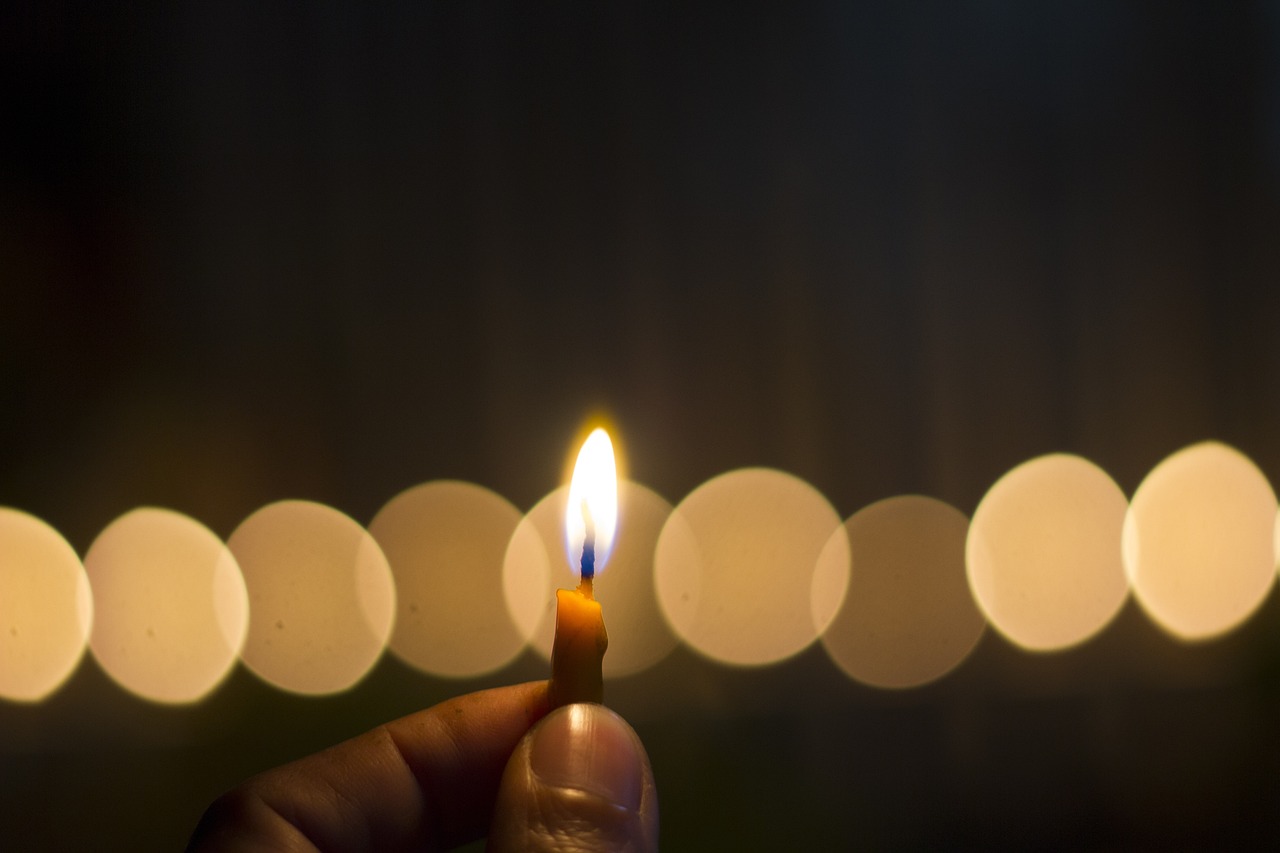
Common Nighttime Hazards
Nighttime activities can be exhilarating, but they also come with a unique set of risks that can turn a fun outing into a dangerous situation. One of the most significant hazards is reduced visibility, which can lead to accidents and injuries. Imagine walking down a dimly lit street where shadows lurk and every sound seems amplified. It’s easy to feel uneasy, and for good reason—poor lighting can obscure obstacles, making it difficult to navigate safely. This is especially true for pedestrians and cyclists who are more vulnerable in low-light conditions.
Another critical hazard is the increased likelihood of accidents. Whether you’re driving, biking, or simply walking, the chances of encountering a mishap rise significantly at night. For instance, statistics show that road accidents are more prevalent after dark, primarily due to factors like fatigue, impaired vision, and the presence of intoxicated drivers. In fact, a study revealed that nearly 50% of fatal crashes occur at night, highlighting the importance of being cautious and prepared when venturing out after sunset.
Moreover, wildlife encounters pose an unexpected risk during nighttime activities, especially in rural areas or near parks. Animals such as deer, raccoons, and even coyotes are more active at night, and a sudden encounter with wildlife can lead to dangerous situations. Drivers, in particular, should be aware of the possibility of animals crossing the road, as this can result in serious accidents. It’s essential to stay vigilant and reduce speed in areas where wildlife is known to roam.
Finally, there are social hazards that can arise during nighttime outings. Darkness can create an environment where individuals may feel emboldened to engage in risky behaviors, such as drinking excessively or wandering into unsafe areas. It’s crucial to remain aware of your surroundings and the company you keep. Surrounding yourself with trusted friends and staying in well-lit areas can significantly mitigate these risks.
In summary, understanding the common hazards associated with nighttime activities is vital for ensuring safety. By being aware of reduced visibility, increased accident risks, wildlife encounters, and social dangers, individuals can take proactive steps to protect themselves and enjoy their nighttime adventures more safely.
- What should I do if I encounter wildlife while out at night?
It's best to stay calm and keep a safe distance. Avoid approaching the animal and slowly back away if necessary. - How can I improve my visibility when walking or biking at night?
Wear reflective clothing, use lights on your bike, and carry a flashlight to enhance your visibility. - What are some safety tips for driving at night?
Ensure your headlights are functioning properly, reduce speed, and stay alert for pedestrians and animals on the road.
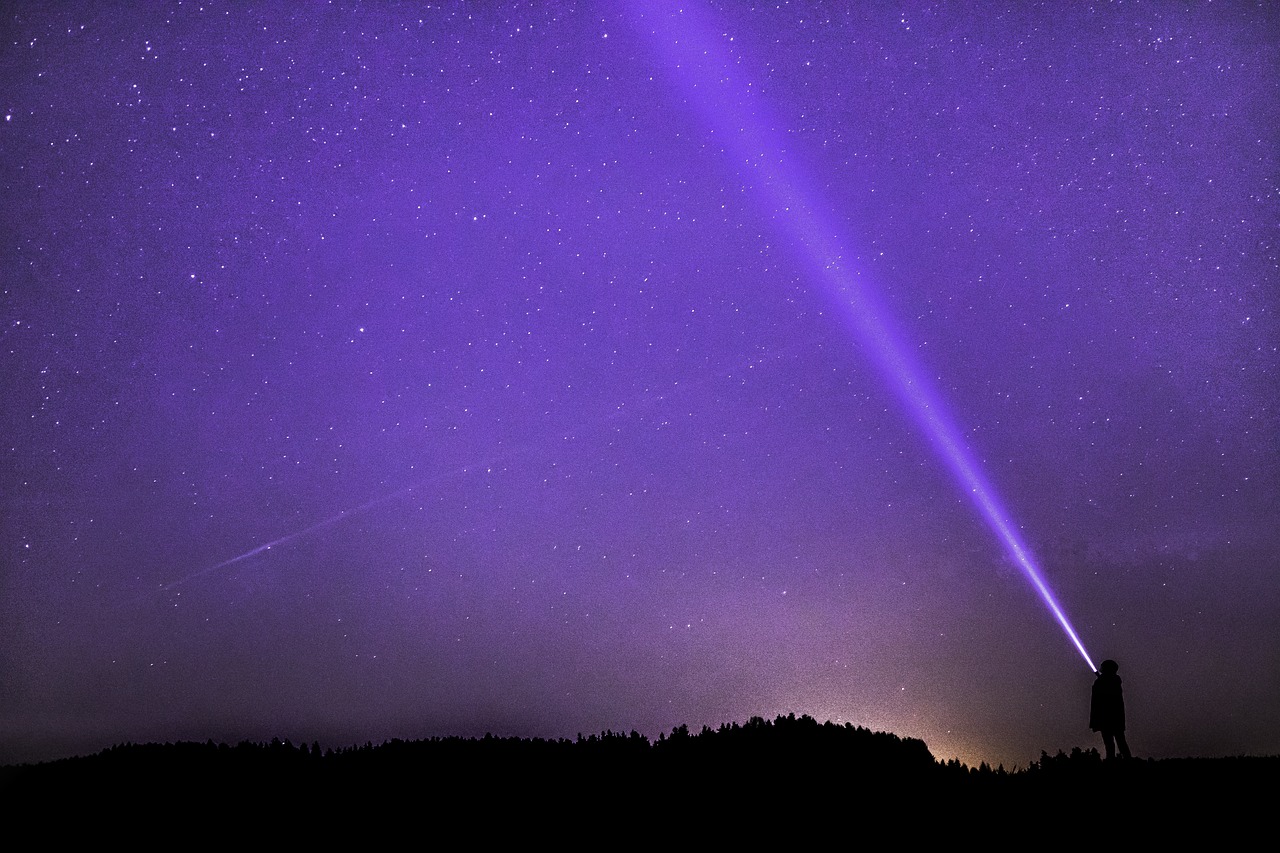
Road Safety Concerns
Driving at night can feel exhilarating, with the open road stretching ahead and the stars twinkling above. However, it’s crucial to recognize that nighttime driving comes with its own set of challenges and risks. The combination of limited visibility, fatigue, and the potential for encountering impaired drivers can create a perfect storm for accidents. Did you know that most fatal car accidents occur at night? This statistic alone should make every driver think twice about their nighttime driving habits.
One of the primary concerns when driving in the dark is reduced visibility. Unlike daytime driving, where the sun provides ample light, nighttime conditions can obscure road signs, pedestrians, and even other vehicles. It’s not just about the headlights; it’s about understanding how to use them effectively. Many drivers don’t realize that high beams can be a double-edged sword. While they illuminate the road ahead, they can also blind oncoming traffic, leading to dangerous situations.
In addition to visibility issues, fatigue is a significant factor contributing to nighttime accidents. After a long day, many drivers might feel drowsy, and this can impair their reaction times and decision-making abilities. If you’ve ever felt your eyelids getting heavy while driving, you know just how dangerous that can be! To combat this, it’s essential to recognize your limits and take breaks when necessary. A quick power nap can make all the difference between a safe journey and a tragic accident.
Moreover, the presence of impaired drivers on the road at night cannot be overlooked. Whether due to alcohol consumption or drug use, driving under the influence significantly increases the likelihood of accidents. It’s essential for all drivers to stay vigilant and be prepared to react to potentially dangerous situations. If you see a vehicle swerving or driving erratically, it’s best to keep your distance and report it if necessary.
To summarize, here are some key factors to keep in mind for road safety during nighttime driving:
- Use headlights wisely: Switch between high beams and low beams depending on traffic conditions.
- Take breaks: If you feel tired, pull over and rest.
- Stay alert: Be aware of your surroundings and watch for impaired drivers.
By being aware of these road safety concerns and taking proactive measures, you can significantly reduce your risk of accidents while driving at night. Remember, the thrill of the night can quickly turn into a nightmare if proper precautions aren’t taken. So, buckle up, stay alert, and drive safely!
Q: What should I do if I feel drowsy while driving at night?
A: If you feel drowsy, it’s best to pull over to a safe location and take a short nap or switch drivers if possible. Avoid pushing through fatigue.
Q: How can I improve my visibility while driving at night?
A: Ensure your headlights are clean and properly aimed, use high beams when appropriate, and avoid looking directly at oncoming headlights to reduce glare.
Q: What are the signs of an impaired driver?
A: Signs include erratic driving, swerving, sudden stops, and driving without headlights at night. If you suspect someone is impaired, keep your distance and report it if necessary.

Impact of Headlight Use
When it comes to nighttime driving, the cannot be overstated. Properly functioning headlights are not just a convenience; they are a vital safety feature that can mean the difference between a safe journey and a potential accident. Imagine driving down a dark road, where the only source of light is your vehicle's headlights. If they are not used correctly, you could easily overlook obstacles, pedestrians, or even other vehicles. This is why understanding how to effectively use headlights is crucial.
Many drivers are unaware that there are different types of headlights and that each serves a specific purpose. For instance, high beams are designed to illuminate the road further ahead, making them ideal for rural or poorly lit areas. However, using high beams in traffic or when other vehicles are approaching can blind other drivers, creating dangerous situations. On the other hand, low beams are intended for city driving or when other vehicles are near, as they provide adequate illumination without causing glare.
To illustrate the importance of headlight usage, consider the following table that highlights the differences between high and low beams:
| Headlight Type | Best Use | Visibility Range |
|---|---|---|
| High Beams | Rural areas, open highways | Up to 500 feet |
| Low Beams | City driving, in traffic | Up to 200 feet |
Additionally, it's not just about when to use high or low beams; maintaining your headlights is equally important. Over time, headlights can become dim or cloudy due to wear and tear, reducing their effectiveness. Regular maintenance, such as cleaning and replacing bulbs, can significantly improve visibility. Drivers should also be aware of the weather conditions; fog, rain, or snow can impact how well headlights illuminate the road. In such cases, using fog lights or low beams can enhance visibility and safety.
But why stop there? As a responsible driver, you should also be aware of your surroundings. This includes being mindful of how your headlights affect other drivers. If you find yourself driving in an area with a lot of oncoming traffic, consider switching to low beams to avoid blinding other drivers. After all, driving is a shared responsibility, and being considerate can help ensure everyone arrives safely at their destination.
In conclusion, the impact of headlight use on nighttime driving is profound. By understanding when and how to use your headlights effectively, you not only enhance your visibility but also contribute to the safety of others on the road. So, the next time you hit the road after dark, take a moment to consider your headlight settings and ensure they are optimized for the conditions. It’s a small adjustment that can lead to a significantly safer driving experience.
- What is the best way to maintain my headlights? Regularly clean your headlights and replace any dim or burnt-out bulbs to ensure optimal performance.
- When should I use high beams? Use high beams in rural areas or on open highways when there is no oncoming traffic.
- Can cloudy headlights affect visibility? Yes, cloudy or dirty headlights can significantly reduce the amount of light emitted, making it harder to see at night.
- Are there laws regarding headlight use? Yes, many regions have specific laws regarding when to use high and low beams, so it’s important to familiarize yourself with local regulations.
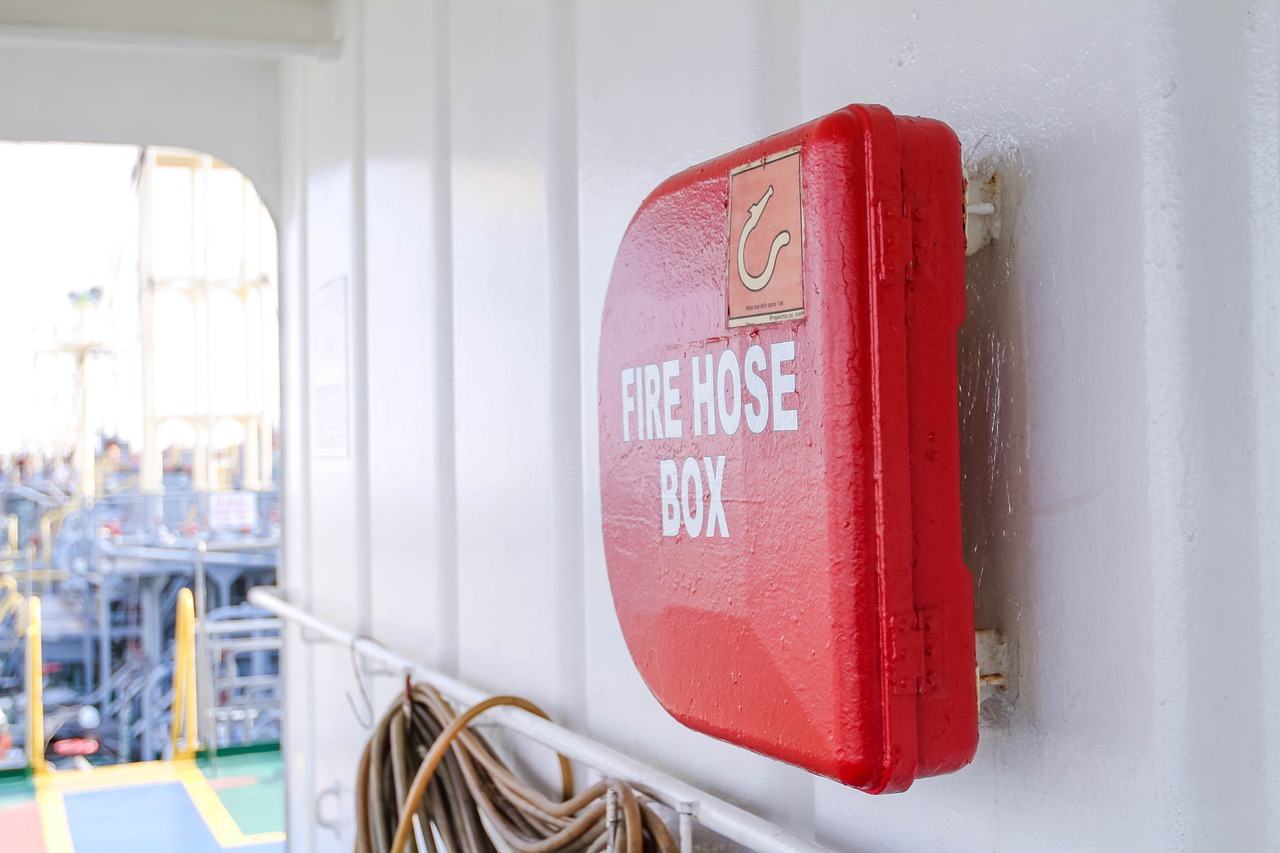
Pedestrian Safety Measures
When it comes to nighttime safety, pedestrians often face unique challenges that can significantly increase their risk of accidents. With reduced visibility and the potential for distracted drivers, it’s essential for individuals to take proactive steps to ensure they remain visible and safe during their evening outings. One of the most effective ways to enhance visibility is by wearing reflective clothing. This type of apparel is designed to reflect light, making it easier for drivers to see pedestrians from a distance, even in low-light conditions. In fact, studies have shown that wearing reflective gear can reduce the likelihood of being involved in an accident by up to 75%!
Additionally, carrying a flashlight or using a smartphone flashlight can illuminate your path and alert drivers to your presence. It’s not just about what you wear; it’s also about how you navigate your surroundings. Always aim to stick to well-lit areas and avoid shortcuts through dark alleys or poorly lit streets. If you must walk in such areas, make sure to stay alert and aware of your surroundings. It's also a good idea to walk against traffic, allowing you to see oncoming vehicles and react if necessary.
Moreover, consider using a light-up accessory, such as LED armbands or shoe lights. These small devices can be easily attached to your clothing or footwear and provide additional visibility. You might be surprised at how effective these little gadgets can be! The key is to create a combination of visibility strategies that work for you. For example, wearing reflective clothing, carrying a flashlight, and using light-up accessories can significantly increase your chances of being seen.
In addition to personal visibility measures, it’s essential to understand the importance of crossing streets safely. Always use marked crosswalks and wait for traffic signals when available. If there are no signals, make sure to look both ways before crossing and ensure that vehicles have come to a complete stop. Remember, just because you can see a car doesn't mean the driver can see you! By taking these precautions, you can help create a safer environment for yourself and others during nighttime activities.
- What should I wear to be visible at night?
Opt for reflective clothing and accessories, such as vests or armbands, and consider bright colors that stand out in low light. - Is it safe to walk alone at night?
While it can be safe, it’s important to stay alert, avoid poorly lit areas, and inform someone of your whereabouts. - How can I enhance my visibility as a pedestrian?
Use a flashlight, wear reflective gear, and choose well-lit paths to increase your visibility to drivers. - Are there specific times when pedestrian accidents are more likely?
Accidents are more common during dusk and late evening hours when visibility is significantly reduced.

Outdoor Activities and Risks
Engaging in outdoor activities at night can be an exhilarating experience, but it comes with its own set of risks that should not be overlooked. Imagine hiking under a blanket of stars or cycling through a moonlit park; it sounds magical, right? However, the thrill can quickly turn into a nightmare if proper precautions aren’t taken. The darkness can conceal hazards that are easily noticeable during the day, such as uneven terrain, wildlife, or even other people. Understanding these risks will empower you to prepare adequately and enjoy your nighttime adventures safely.
One of the primary risks associated with nighttime outdoor activities is reduced visibility. When the sun goes down, our ability to see clearly diminishes significantly. This is particularly crucial in environments like forests or trails where natural light is scarce. To mitigate this risk, consider using headlamps or flashlights that illuminate your path, ensuring that you can spot obstacles before they become a problem. Additionally, wearing reflective gear can help others see you, especially if you are part of a group.
Another risk to consider is the potential for getting lost. During the day, landmarks are easier to identify, but at night, everything looks different. It’s easy to take a wrong turn or misjudge your surroundings. To combat this, always plan your route ahead of time. Familiarize yourself with the area using maps or GPS devices, and make sure to share your itinerary with someone who isn’t joining you. This way, if something goes wrong, someone will know where to look for you.
Wildlife encounters can also pose a risk during nighttime activities. Many animals are nocturnal, and their behaviors can be unpredictable. For instance, a curious raccoon or an unexpected deer can suddenly cross your path. To minimize these encounters, make noise as you move through the area. This alerts wildlife to your presence, giving them a chance to avoid you. Additionally, it’s wise to avoid carrying food that can attract animals, especially if you’re camping.
Lastly, the risk of fatigue should not be underestimated. Engaging in physical activity at night can be more exhausting than during the day due to the added strain of focusing in low light conditions. Make sure to listen to your body and take breaks when needed. Staying hydrated and well-rested will enhance your ability to react quickly to any potential dangers.
In summary, while nighttime outdoor activities can be thrilling, they come with unique risks that require careful consideration. By enhancing your visibility, planning your route, being mindful of wildlife, and managing fatigue, you can significantly reduce the risks and enjoy your adventures under the stars to the fullest.
- What are the best safety tips for nighttime hiking? Always carry a flashlight, wear reflective clothing, and let someone know your route.
- How can I improve my visibility while cycling at night? Use bright lights on your bike, wear reflective gear, and avoid dark clothing.
- Is it safe to camp outdoors at night? Yes, but ensure your campsite is well-lit, and be aware of your surroundings.
- What should I do if I encounter wildlife at night? Make noise to alert the animal of your presence and back away slowly.

Safety Equipment for Nighttime Activities
When it comes to enjoying nighttime activities, whether you're hiking under the stars or cycling through the moonlit streets, having the right safety equipment can make all the difference. Imagine heading out for a midnight jog, the cool air brushing against your skin, but suddenly feeling uncertain because of the darkness encroaching around you. This is where safety equipment steps in, transforming your experience from potentially hazardous to thrilling and secure.
One of the most effective ways to enhance your visibility during nighttime activities is by wearing reflective clothing and gear. These items are designed to catch the light, making you noticeable to others, especially drivers. For instance, consider a simple reflective vest or a pair of joggers with reflective strips. Not only do they increase your visibility, but they also provide a sense of confidence as you venture out into the night. When selecting reflective gear, look for products that have a high visibility rating and are comfortable enough for long wear.
In addition to clothing, incorporating personal safety devices into your nighttime routine can provide an extra layer of security. Items like flashlights or headlamps are invaluable for illuminating your path, allowing you to spot any potential hazards ahead. Imagine walking on a trail and suddenly encountering a rock or a branch; a flashlight can help you avoid a nasty fall. Furthermore, personal alarms can be a lifesaver in emergency situations, alerting others to your location if you ever find yourself in distress.
To give you a clearer picture of how these items can enhance your nighttime safety, here’s a quick comparison table:
| Safety Equipment | Purpose | Benefits |
|---|---|---|
| Reflective Clothing | Increases visibility | Helps others see you, especially in low light |
| Flashlights | Illuminates your path | Helps avoid obstacles and hazards |
| Personal Alarms | Alert others in emergencies | Provides peace of mind and a sense of security |
While having the right equipment is essential, it’s equally important to know how to use it effectively. For example, carrying a flashlight with a good battery life can ensure that you’re not left in the dark when you need it most. Similarly, understanding the different settings on your personal alarm can help you maximize its effectiveness when you need to draw attention to yourself.
Ultimately, investing in quality safety equipment is not just about being prepared; it's about enhancing your overall experience during nighttime activities. The thrill of the night can be enjoyed to its fullest when you feel safe and secure. So, whether you're planning a late-night hike or a leisurely stroll through your neighborhood, remember that the right gear is your best companion in ensuring a fun and safe adventure.
- What types of reflective clothing should I wear? Look for vests, jackets, or pants that have reflective strips or are made from high-visibility materials.
- How bright should my flashlight be for nighttime activities? A flashlight with at least 100 lumens is generally sufficient for most nighttime activities.
- Are personal alarms effective in deterring threats? Yes, personal alarms can be very effective in attracting attention and deterring potential threats.
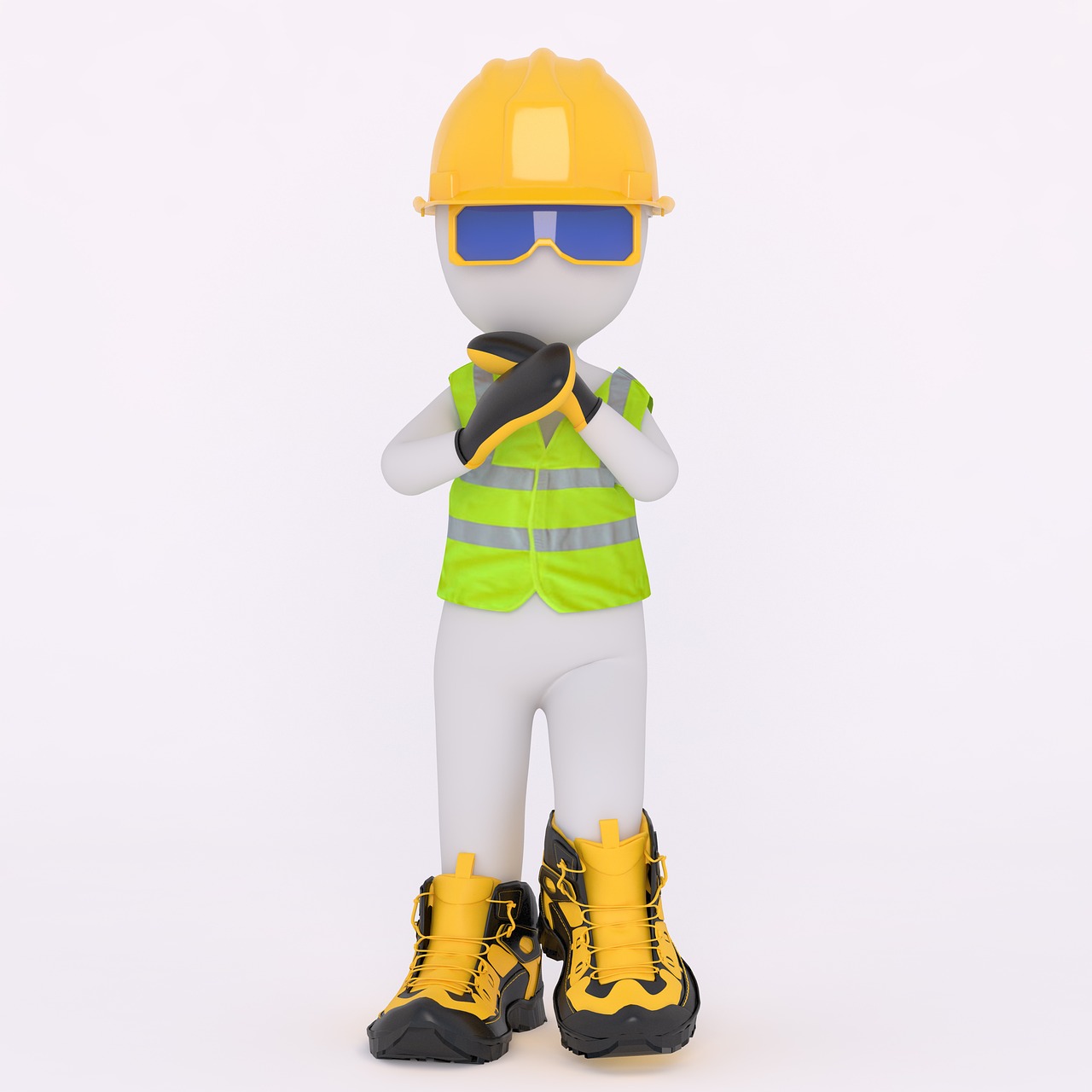
Reflective Clothing and Gear
When it comes to nighttime activities, visibility can be the difference between a safe experience and a potential accident. One of the most effective ways to enhance visibility is through the use of . Imagine walking or cycling in a dimly lit area; the last thing you want is for a driver or fellow pedestrian to miss seeing you. Reflective materials work by bouncing light back towards its source, making you stand out against the backdrop of darkness. This simple addition to your wardrobe can significantly reduce the risk of accidents.
Reflective gear comes in various forms, including vests, jackets, and accessories like armbands and shoe clips. Each of these items can be integrated into your outfit without compromising your style. For instance, a sleek, reflective jacket can keep you warm while ensuring you remain visible to others. Additionally, reflective accessories can be easily added to your existing attire, making them a versatile option for anyone looking to improve their nighttime safety.
It's also important to consider the quality and placement of reflective materials. Look for gear that has high-visibility reflective strips or patterns, as these can be more effective than plain materials. Ideally, reflective elements should be placed on areas that are most visible to oncoming traffic or pedestrians, such as the torso, arms, and legs. When these items are worn, they create a striking contrast against the dark, making it easier for others to spot you from a distance.
In addition to personal safety, wearing reflective clothing can also set a positive example for others. Whether you’re jogging through a park or cycling along a busy street, your visibility can encourage others to take safety precautions seriously as well. Remember, safety is a collective responsibility, and by equipping yourself with the right gear, you contribute to a safer environment for everyone.
To summarize, incorporating reflective clothing and gear into your nighttime activities is a smart choice. Not only does it enhance your visibility, but it also boosts your confidence as you navigate through dark spaces. So next time you plan an evening outing, think about how you can make yourself more visible. After all, it’s better to be safe than sorry!
- What types of reflective clothing are available? Reflective clothing comes in various forms including vests, jackets, pants, and accessories like hats and gloves.
- How effective is reflective gear? Reflective gear is highly effective at increasing visibility in low-light conditions, making it easier for drivers and other pedestrians to see you.
- Can I wear reflective gear with regular clothing? Yes, reflective gear can be easily integrated with regular clothing, allowing you to maintain your style while enhancing safety.
- Where should I place reflective items for maximum visibility? Reflective items should be worn on the torso, arms, and legs, as these areas are most visible to oncoming traffic.
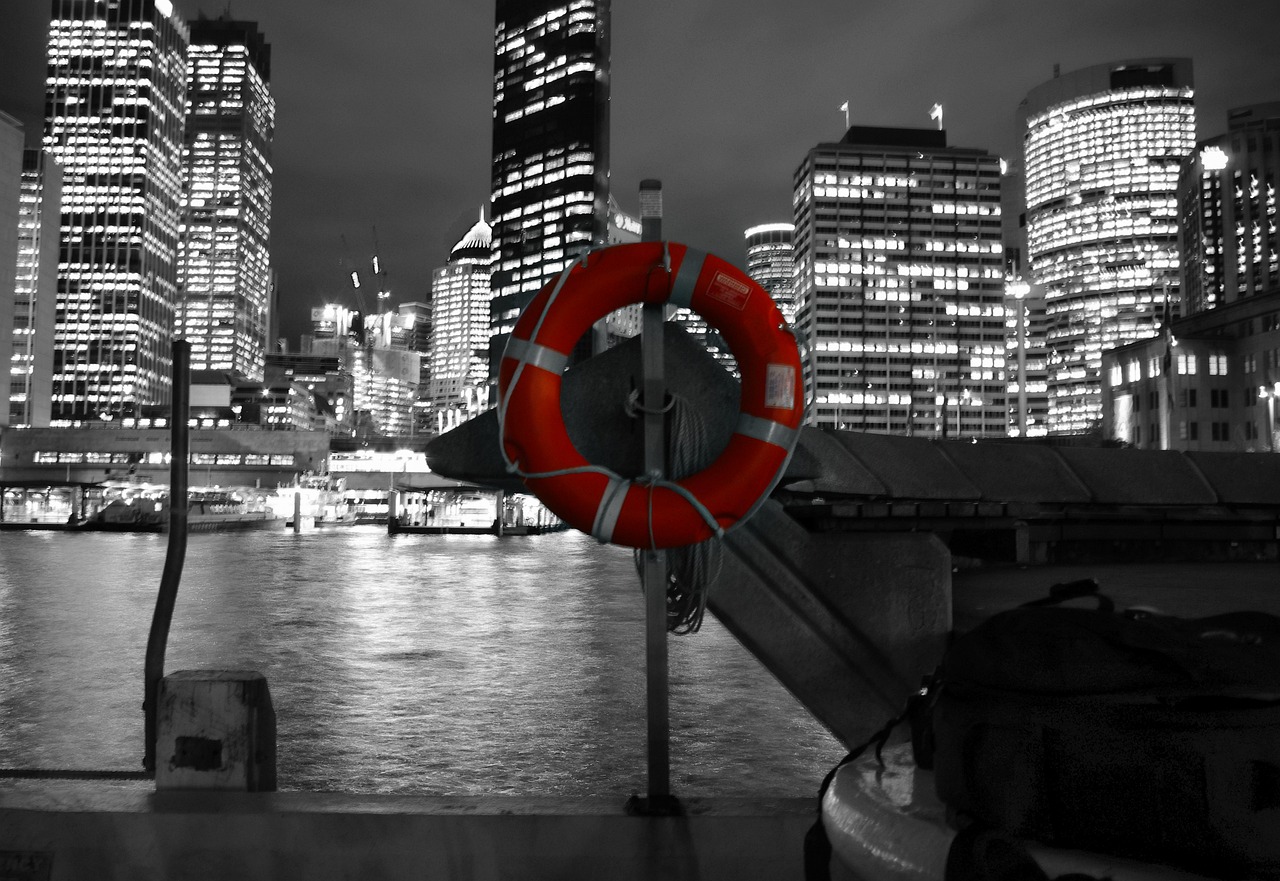
Personal Safety Devices
When it comes to nighttime safety, having the right can make a world of difference. Imagine you're out for a late-night walk or heading home from a friend's house after dark. The streets may be quiet, but that doesn't mean you should let your guard down. Personal safety devices are like your safety net, providing an extra layer of protection and peace of mind. These tools are essential for anyone venturing out after sunset, especially in unfamiliar areas.
One of the most common and effective personal safety devices is the flashlight. A good flashlight not only illuminates your path but also serves as a signal to others that you are present. When choosing a flashlight, consider its brightness, battery life, and size. You want something that fits comfortably in your hand and can easily be stowed in your bag or pocket. Some flashlights even come with a strobe feature, which can be used to attract attention in emergency situations.
Another valuable tool is a personal alarm. This small device emits a loud sound when activated, which can deter potential threats and alert those nearby. Think of it as your personal siren; it’s compact and easy to carry, often fitting on a keychain or in a purse. When you feel uneasy or notice someone following you, a quick press of the button can create a distraction and give you the chance to escape or seek help.
In addition to these devices, pepper spray is a popular option for self-defense. While it’s crucial to familiarize yourself with the regulations regarding its use in your area, pepper spray can provide a sense of security. It’s designed to incapacitate an attacker temporarily, giving you the precious moments needed to flee to safety. However, remember that carrying pepper spray comes with a responsibility; always be aware of your surroundings and use it only in legitimate self-defense situations.
Lastly, consider investing in a smartphone safety app. Many apps offer features like location sharing, emergency contacts, and even the ability to send alerts with your GPS location to friends or family. In a world where technology is at our fingertips, these apps can be a lifesaver. Just imagine being able to share your location with a trusted friend as you walk home at night, giving both you and them peace of mind.
To sum it up, personal safety devices are not just accessories; they are essential tools that can enhance your safety during nighttime activities. Whether it's a flashlight, personal alarm, pepper spray, or a smartphone app, each device serves a unique purpose in keeping you safe. As you prepare for your next nighttime outing, take a moment to consider what safety devices you can incorporate into your routine. After all, it’s better to be prepared than to find yourself in a precarious situation without the right tools at hand.
- What is the best personal safety device for nighttime activities?
The best device often depends on your personal needs. A flashlight and personal alarm are generally recommended for most situations.
- Are personal safety devices legal to carry?
While most personal safety devices like flashlights and alarms are legal, regulations regarding items like pepper spray vary by location. Always check local laws before carrying.
- How can I ensure my safety while using a personal safety device?
Stay aware of your surroundings, practice using the device beforehand, and have a plan for what to do in case of an emergency.
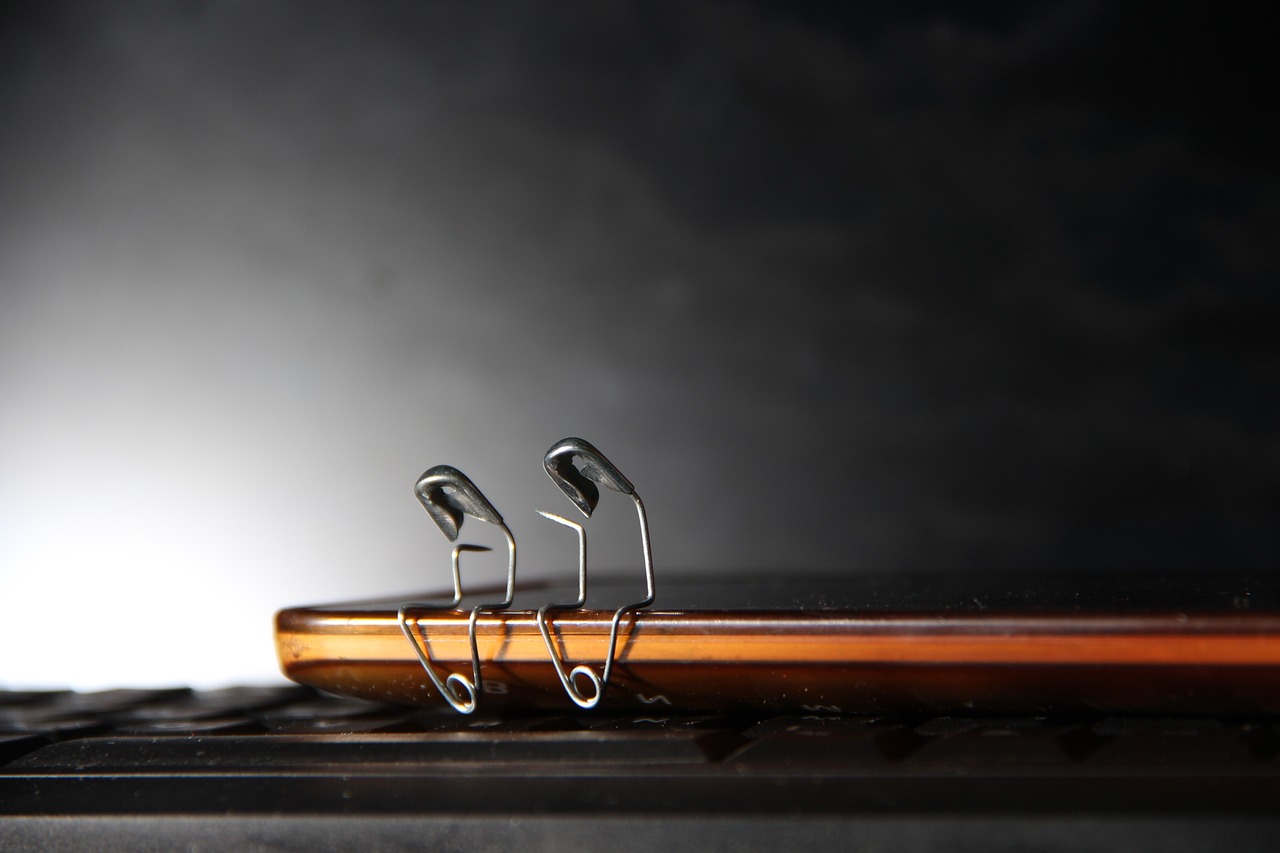
Best Practices for Nighttime Safety
When it comes to nighttime safety, implementing best practices can make all the difference between a fun evening and a dangerous situation. One of the most important things to consider is planning your route. Before you head out, take a moment to familiarize yourself with the area you’ll be navigating. This not only helps you avoid potential hazards but also allows you to identify safe places to stop if needed. For instance, if you’re heading to a park or a trail, check for well-lit entrances and exits. Knowing your surroundings can be as comforting as having a map in a foreign land.
Another critical aspect is maintaining a heightened sense of awareness. The nighttime can create an illusion of safety, but it’s essential to stay alert and aware of your surroundings. This means keeping your eyes peeled for any unusual activity or potential threats. If you’re out walking, try to avoid distractions like your phone or headphones. Instead, engage with your environment—listen for sounds, look for movement, and trust your instincts. If something feels off, it probably is. Think of it like walking through a dark forest; the more attuned you are to the rustling leaves or snapping twigs, the better prepared you are for whatever lies ahead.
Additionally, traveling in groups is another effective strategy for enhancing safety during nighttime outings. There’s strength in numbers, and being part of a group can deter potential threats. If you’re going out for a night run or a stroll, invite a friend or two to join you. Not only does this make the experience more enjoyable, but it also creates a support system in case of emergencies. Remember, even the most cautious individuals can find themselves in unexpected situations, so it’s always better to have someone by your side.
Moreover, consider utilizing technology to your advantage. There are numerous apps designed to enhance personal safety. For instance, apps that allow you to share your location with trusted friends or family can provide peace of mind. In case of an emergency, you can quickly alert someone who can help. Similarly, carrying a fully charged phone can be a lifesaver, literally. Just like a lighthouse guiding ships to safety, your phone can help navigate you out of tricky situations.
Lastly, always carry essential safety equipment. This includes items like a flashlight, which can illuminate your path and make you more visible to others. Reflective gear is also a must-have; it’s like wearing a beacon that signals your presence in the dark. When combined, these tools can significantly enhance your visibility and safety. Think of them as your trusty shield against the nighttime perils that lurk in the shadows.
- What should I do if I feel unsafe while walking at night? Trust your instincts. If you feel uncomfortable, seek a well-lit area and consider calling a friend or a rideshare service to get home.
- Is it safe to jog at night? Yes, but it’s important to stay in well-lit areas, wear reflective clothing, and preferably run with a buddy.
- How can I improve my visibility while biking at night? Use front and rear lights, wear reflective gear, and choose routes that are well-lit.

Planning Your Route
When it comes to nighttime activities, one of the most critical aspects is . You wouldn’t head out on a road trip without a map or GPS, right? The same logic applies when you're venturing out after dark. Familiarizing yourself with the area not only helps you avoid potential hazards but also ensures that you have a clear idea of where you’re going. Think of it as having a safety net; it provides peace of mind and a sense of control.
Before you set out, take a moment to consider the following factors that can enhance your nighttime experience:
- Lighting Conditions: Check if the areas you plan to traverse are well-lit. Streets with ample lighting can significantly reduce the risk of accidents.
- Terrain: Be aware of the terrain you’ll encounter. Uneven surfaces, stairs, or natural obstacles can pose a risk, especially at night.
- Emergency Contacts: Have a list of emergency contacts ready. Whether it's a friend, family member, or local authorities, knowing who to reach out to can be crucial.
Moreover, it’s wise to consider the time of your outing. Early evenings might seem safer due to residual daylight, while late-night adventures can be riskier. If you’re planning to engage in activities like hiking or biking, it’s best to have a designated route that you can navigate easily. You could even use a mapping app to mark your path and share it with someone who isn’t joining you.
In addition to these considerations, think about the mode of transportation you’ll be using. If you’re driving, ensure your vehicle is equipped with functioning headlights and that you’re aware of how to adjust them for optimal visibility. If you’re walking or biking, consider carrying a flashlight or wearing gear that makes you more visible to others. Just like a lighthouse guides ships safely to shore, your planning can help guide you safely through the night.
Ultimately, taking the time to plan your route can make all the difference. It transforms a potentially hazardous adventure into a manageable and enjoyable experience. Remember, it’s not just about getting from point A to point B; it’s about ensuring that you arrive safely and can make the most of your nighttime outing.
Q: What should I do if I get lost at night?
A: Stay calm and try to retrace your steps. If you have a phone, use a mapping app to find your way back or contact someone for assistance.
Q: How can I ensure my safety while walking at night?
A: Stick to well-lit areas, avoid shortcuts through dark or secluded places, and consider walking with a friend or carrying a personal safety device.
Q: Is it safe to cycle at night?
A: Yes, but make sure to wear reflective gear, use lights on your bike, and follow traffic rules to ensure your safety on the road.
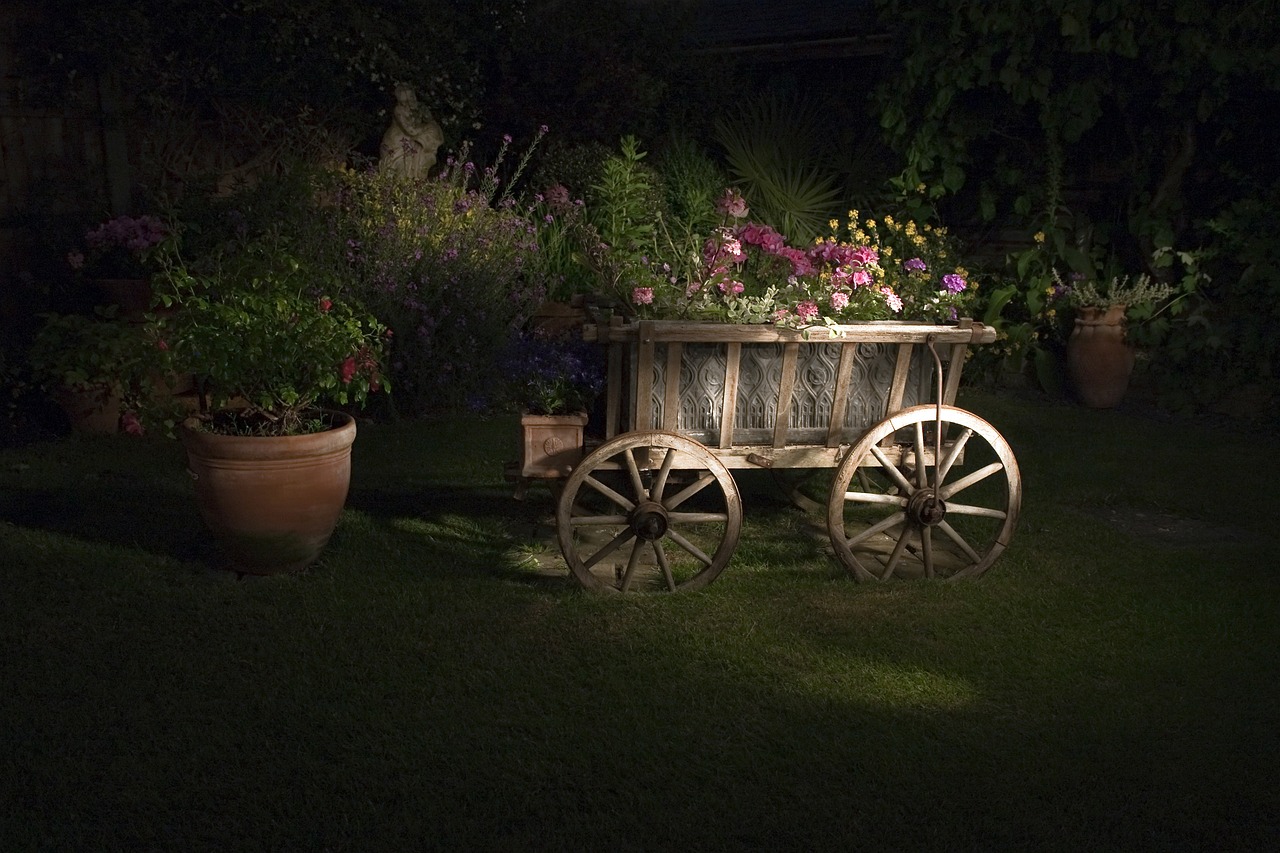
Staying Alert and Aware
When it comes to nighttime activities, is your first line of defense against potential dangers. Think of it like being a superhero—your superpower is your ability to notice things that others might overlook. Picture this: you're out for a late-night jog, and the world around you is cloaked in darkness. The sounds of the night can be both soothing and eerie. To truly enjoy your experience, you need to be in tune with your surroundings. The right mindset can make all the difference!
One effective strategy is to engage your senses. Listen closely to the sounds around you. Are there footsteps behind you? Is that rustling in the bushes a harmless critter or something more concerning? By sharpening your auditory awareness, you can pick up on cues that may indicate danger. Additionally, keep your eyes peeled for movement and changes in your environment. The more you focus, the more you’ll notice the subtle shifts that might otherwise go unnoticed.
Moreover, it’s crucial to minimize distractions. In this digital age, our phones can be both a blessing and a curse. While they provide maps and emergency contacts, they can also divert your attention. Try to limit your phone use while navigating dark areas. Instead, consider investing in a hands-free device that allows you to stay connected without compromising your awareness. This way, you can respond to messages or calls while keeping your head up and your eyes scanning for potential hazards.
Another aspect of staying alert is to trust your instincts. If something feels off, it probably is. Your gut feeling is an evolutionary tool designed to protect you. Don’t hesitate to change your route or seek help if you feel uncomfortable. This is especially important in unfamiliar areas where your intuition can guide you to safety.
Finally, consider the buddy system. Having a friend or family member with you during nighttime activities can greatly enhance your safety. Not only can you look out for each other, but you can also share insights and observations. Plus, there’s nothing quite like the camaraderie of tackling the night together! If you're heading out solo, let someone know your plans and expected return time. This way, someone will be aware if you don’t make it back as expected.
In summary, being vigilant during nighttime outings is essential. By honing your senses, minimizing distractions, trusting your instincts, and considering the buddy system, you can significantly improve your safety. Remember, the night can be full of adventure, but it’s your awareness that will keep those adventures enjoyable and safe!
- What should I do if I feel unsafe while out at night?
If you feel unsafe, trust your instincts. Change your route, find a well-lit area, or seek help from nearby individuals or establishments.
- How can I improve my visibility at night?
Wear reflective clothing, use lights on your bike or backpack, and carry a flashlight to enhance your visibility.
- Is it safer to go out at night with a friend?
Yes, going out with a friend can enhance your safety as you can look out for each other and provide support in case of emergencies.
Frequently Asked Questions
- What are the main risks associated with nighttime activities?
Nighttime activities come with a host of risks, primarily due to poor visibility. Reduced light can lead to accidents, whether you're driving, biking, or walking. Additionally, the chance of encountering hazards like uneven terrain or wildlife increases after dark. It's essential to be aware of these risks and take necessary precautions to ensure safety.
- How can I improve my visibility when out at night?
Improving visibility at night can be achieved through several methods. Wearing reflective clothing is one of the most effective ways to stand out in low-light conditions. Additionally, using flashlights or headlamps can help illuminate your path. If you're driving, ensure your headlights are properly adjusted and use high beams when appropriate to enhance your visibility.
- What safety equipment should I carry for nighttime activities?
When engaging in nighttime activities, it's wise to carry essential safety equipment. This includes reflective gear, a reliable flashlight, and personal safety devices such as alarms or pepper spray. These tools not only enhance your visibility but also provide an added layer of security, helping you feel more confident during your outings.
- Are there specific precautions for pedestrians at night?
Absolutely! Pedestrians should take several precautions when walking at night. Wearing bright or reflective clothing can significantly improve visibility to drivers. Additionally, sticking to well-lit paths and being aware of your surroundings can help you avoid potential dangers. It's also a good idea to avoid distractions, like using your phone, while walking.
- What should I do if I encounter a dangerous situation at night?
If you find yourself in a dangerous situation at night, the first thing to do is to stay calm. Assess the situation and try to remove yourself from any immediate danger. If you feel threatened, don’t hesitate to use personal safety devices like alarms to attract attention. Always trust your instincts—if something feels off, it's better to be safe than sorry.
- How can I plan my route for nighttime activities?
Planning your route ahead of time is crucial for safety. Familiarize yourself with the area during daylight hours, noting any potential hazards or safe spots. Use GPS or maps to chart a clear path, and consider sharing your route with a friend or family member. This way, someone knows where you are, adding an extra layer of safety.
- What are some best practices for staying alert at night?
Staying alert during nighttime activities involves being aware of your surroundings and minimizing distractions. Avoid using your phone or listening to loud music that can drown out important sounds. Regularly scan your environment for potential hazards, and take breaks if you start to feel fatigued. Remember, a little awareness can go a long way in ensuring your safety.



















